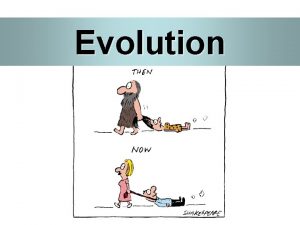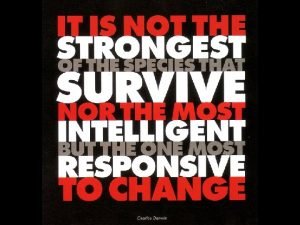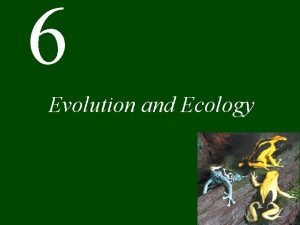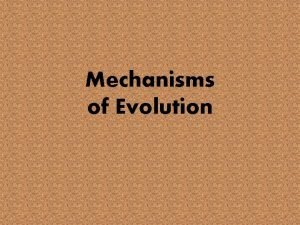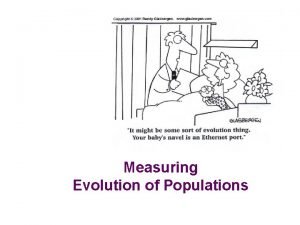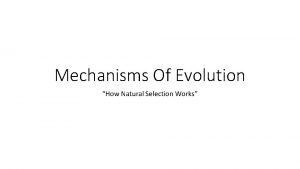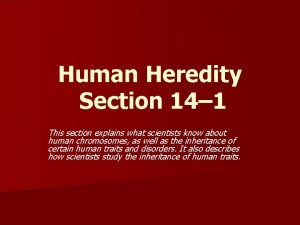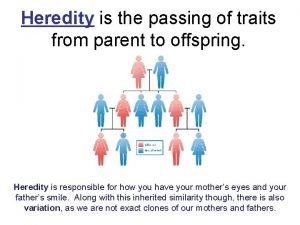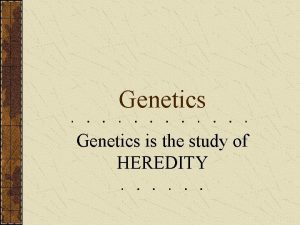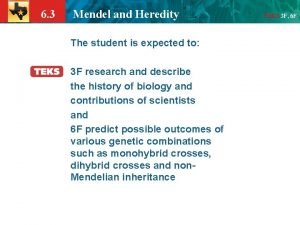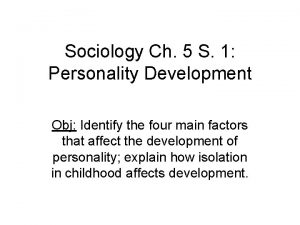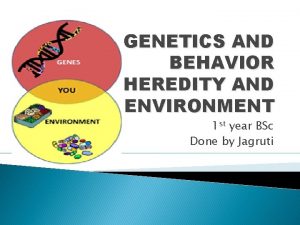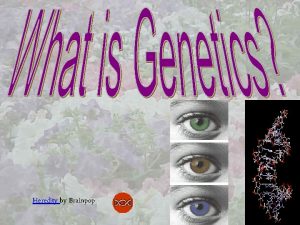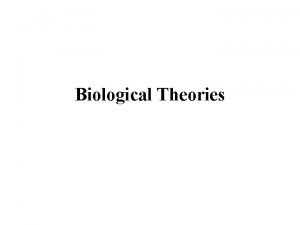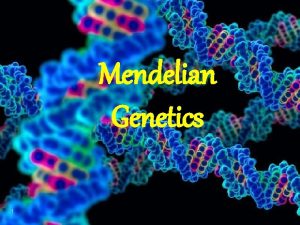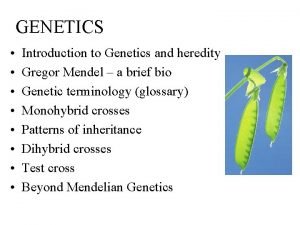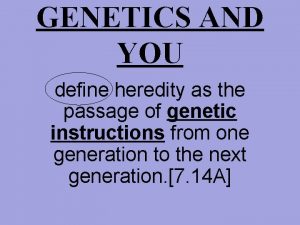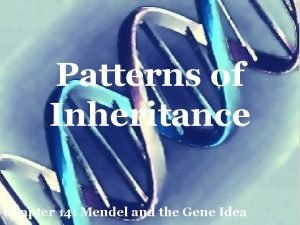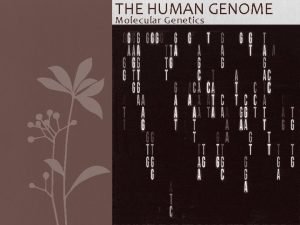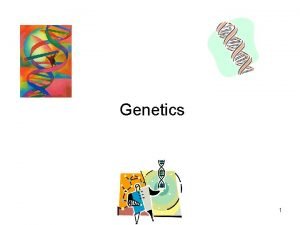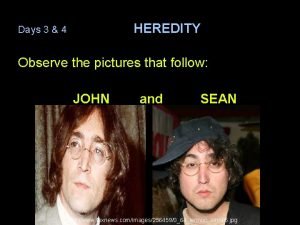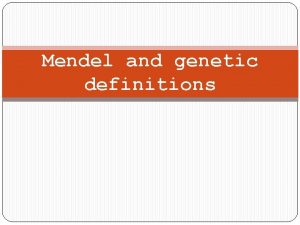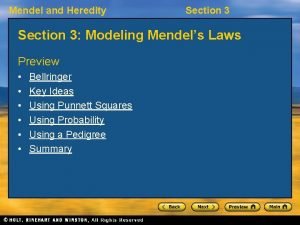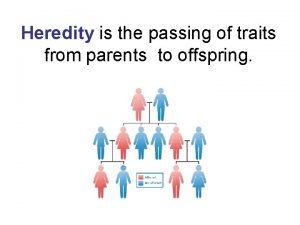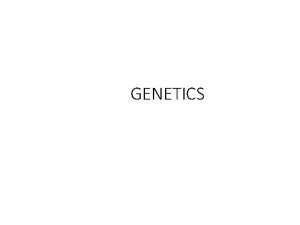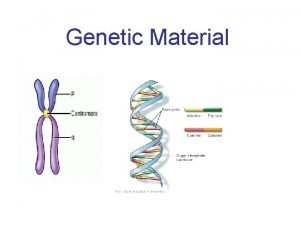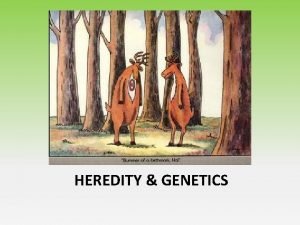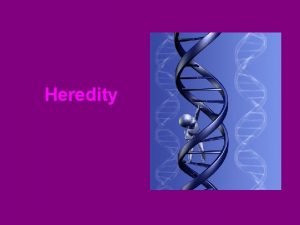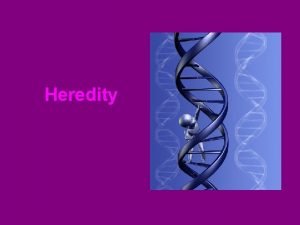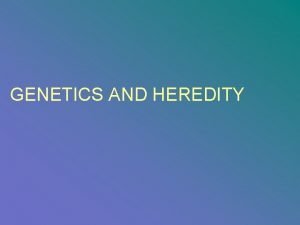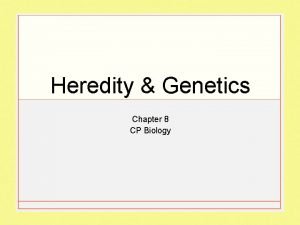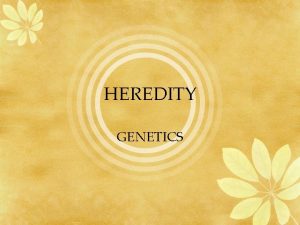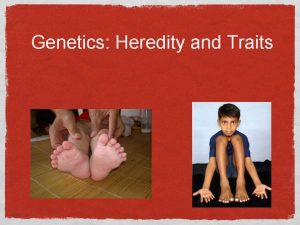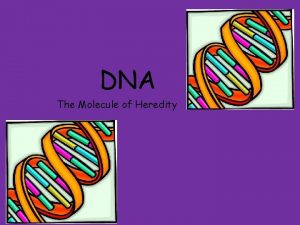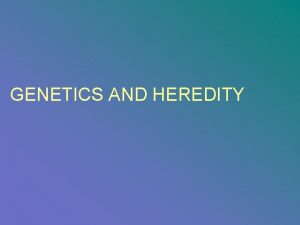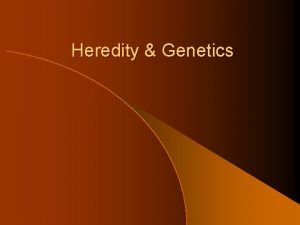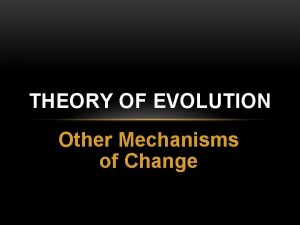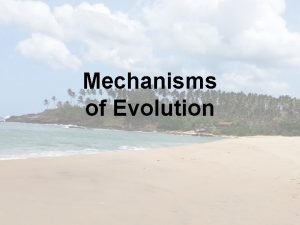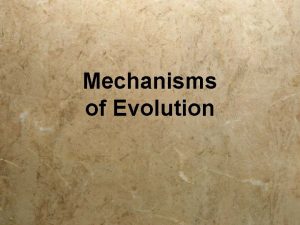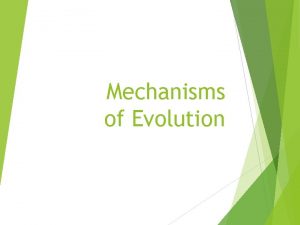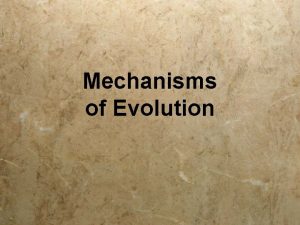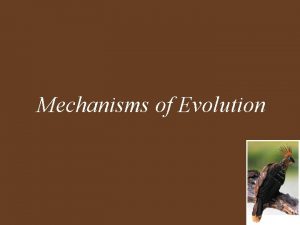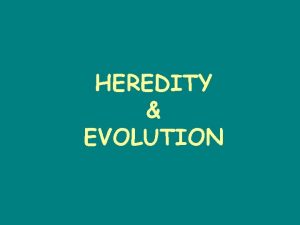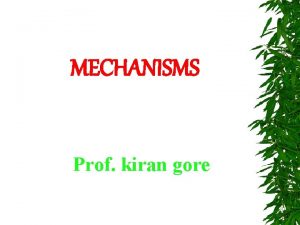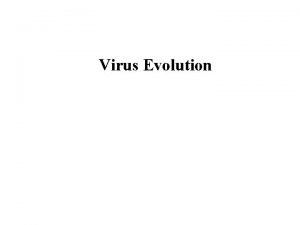Evolution Mechanisms of Evolution Change in the heredity











































- Slides: 43

Evolution

Mechanisms of Evolution • Change in the heredity features of a species over time is evolution. • In the mid-1800 s, Charles Darwin developed theory of evolution still accepted today.

Principles of Natural Selection • Natural Selection means that organisms with traits best suited to their environments are more likely to survive. • Examples: vision, hearing, speed, color, etc…

Factors that Govern Natural Selection • Organisms produce more offspring than can survive. • Variations are found among individuals of a species. • Some variations enable members of a population to survive and reproduce better than others. • Over time, offspring of individuals with helpful variations make up more and more of a population.

Variations • A variation is the appearance of an inherited trait that makes an individual different from other members of the same species. • Camouflage is a protective adaptation that lets an organism blend into its environment.

Camouflage

Variations Variations

Variations



Gradualism • The evolution model that describes evolution as a slow change of one species to another species. • Example: horses appear to have evolved gradually over millions of years.


Punctuated Equilibrium • This model shows that rapid evolution of species can come about by the mutation of just a few genes. As quickly as every few million years. Example: elephants.





Evidence for Evolution 1. 2. 3. 4. 5. Examples of fossils include: The imprint of a leaf, feather, or organism in rock A cast made of minerals that filled in the hollows of an animal track, mollusk shell, or other parts of an organism A piece of wood or bone replaced by minerals An organism frozen in ice An insect or other organism trapped in plant resin

Fossil Imprint on Rock


Fossil of wood or bone replaced by minerals

Fossil in Ice

Fossil in Plant Resin


Geologic Time Scale

Geologic Time Scale

Geologic Time Scale

Fossil Records • Unique rock layers and fossils give information about the geology, weather, and life-forms of each time period. • There are two basic methods for reading the record of past life. Relative Dating and Radioactive Dating

Relative Dating • One method often used to determine the approximate age of a rock layer, or fossils within the layer, is to look at where the particular rock layer is. • Older rock layers lie below successively younger rock layers. • Fossils found in the lower layers of rock are older than those in upper layers. • Relative dating can only estimate the age of a fossil.

Rock Layers


The 4 -foot gray-and-brown baby Woolly Mammoth carcass, believed to be between 40, 000 and 10, 000 years old, was discovered in May 2007 by a reindeer herder in the subarctic Northern Siberia region

Radioactive Dating • Radioactive elements give off radiation, a form of atomic energy. • Radioactive elements change to more stable products as they give off radiation. • Radiation is given off at a constant rate. • Scientists can measure how much of a radioactive element has changed.

Radioactive Dating • Uranium ( a radioactive element) changes to lead as it ages. • Scientists can determine how old a fossil in a rock sample is by measuring the amounts of uranium and lead in the rock. • The more lead, the older the rock, therefore the older the fossil.

Uranium Lead

Radioactive Animation


Other Evidence of Evolution • Body parts that are similar in origin and structure are called homologous.

Homologous Structures

Vestigial Structures • A vestigial structure is a body part that is reduced in size and doesn’t seem to have a function.

Vestigial Structures Hind Leg Bones in Whales Human Appendix

Vestigial Structures

Evolution 26: 24
 Mechanisms of evolution
Mechanisms of evolution Mechanism of evolution
Mechanism of evolution Mechanisms of evolution graphic organizer
Mechanisms of evolution graphic organizer Mechanism of evolution
Mechanism of evolution 5 fingers of evolution
5 fingers of evolution What are the mechanisms of evolution
What are the mechanisms of evolution Mechanisms of evolution
Mechanisms of evolution Genetic drift vs gene flow vs natural selection
Genetic drift vs gene flow vs natural selection Section 14-1 human heredity
Section 14-1 human heredity What is regeneration
What is regeneration Section 3 mendel and heredity
Section 3 mendel and heredity ____________ is the study of heredity.
____________ is the study of heredity. Susie roundpants
Susie roundpants Early ideas about heredity
Early ideas about heredity Section 3 mendel and heredity
Section 3 mendel and heredity Section 3 mendel and heredity
Section 3 mendel and heredity Heredity characteristics include body build
Heredity characteristics include body build Chapter 11 complex inheritance and human heredity test
Chapter 11 complex inheritance and human heredity test Heredity
Heredity Inherited traits are brainpop
Inherited traits are brainpop Heredity defines the passage of genetic material from –
Heredity defines the passage of genetic material from – Heredity and crime
Heredity and crime Heredity terminology
Heredity terminology Genotype
Genotype Heredity is the passage of
Heredity is the passage of Chapter 14 patterns of heredity
Chapter 14 patterns of heredity Mendelian genetics concept map
Mendelian genetics concept map Heredity
Heredity Sanger sequencing
Sanger sequencing ক্রোমাটিড কাকে বলে
ক্রোমাটিড কাকে বলে Heredity examples
Heredity examples Heredity acrostic
Heredity acrostic The scientific study of heredity *
The scientific study of heredity * Pictures of heredity
Pictures of heredity Cpalms heredity
Cpalms heredity The basic units of heredity
The basic units of heredity Genetics is the study of heredity
Genetics is the study of heredity Heredity
Heredity What is genotype
What is genotype Section 3 mendel and heredity
Section 3 mendel and heredity Flower structure
Flower structure Importance of heredity and environment in education
Importance of heredity and environment in education Genetics
Genetics Heredity
Heredity
